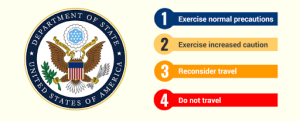Doctors: More research needed to rid Arizona, California of rampant valley fever | Ken Alltucker
Two out of every three cases of valley fever originate in Arizona, but experts worry that doctors and public know too little about the incurable fungal disease that sickens tens of thousands of people in this state every year.
House Majority Leader Kevin McCarthy joined U.S. Rep. David Schweikert, R-Arizona, and University of Arizona medical experts on Monday to tout the progress that officials have made in fighting the disease — as well as highlight the need to raise awareness and secure funding to develop better diagnostic tests and drugs.
One of the key challenges, experts said, is to raise awareness among primary-care doctors who may be slow to diagnose the disease.
“A whole lot of people practicing in this state come from where this disease is rare,” Dr. John Galgiani, director of University of Arizona’s Valley Fever for Center of Excellence, said during a press conference Monday at Banner University Medical Center-Phoenix.
People and animals get valley fever when they inhale airborne spores of the fungus coccidioides, which is found in soil and spread by dust, wind and dirt-moving activity. The vast majority of cases are found in Arizona and California’s Central Valley, though spores have been found as far north as Washington state.
The four counties with the highest concentration of cases include Maricopa, Pinal and Pima counties in Arizona and Kern County in California
The Centers for Disease Control and Prevention reported 8,232 cases of the fungal disease in 2014, but experts believe that represents a fraction of cases.
UA’s Valley Fever for Center of Excellence estimates there are 150,000 cases or more each year, but only about 50,000 people seek medical care. Only a fraction of those who seek medical care are diagnosed with the disease. Pneumonia-like symptoms can include fatigue, cough, chest pain, fever, rash, headache and joint aches.
The infection can spread beyond the lungs and invade the skin, bones, liver, brain, heart and other tissue, according to Mayo Clinic.
One study found that 3,089 valley fever-associated deaths nationwide from 1990 to 2008, according to the CDC.
McCarthy is chairman and Schweikert is co-chair of the Congressional Valley Fever Task Force, which launched in 2013 to raise awareness about the disease.
Since then, the National Institutes of Health has awarded a two-year, $9 million grant to Duke University to conduct a medical study that aims to enroll 1,000 people over six years. Study participants will either be treated with fluconazole or a placebo in a study that will gauge the effectiveness of the generic drug.
The University of Arizona in partnership with Banner Health and Mayo Clinic are clinical trails sites in Arizona that will recruit and evaluate patients for the study. Kern Medical Center will be a third clinical trial site.
Fluconazole is commonly prescribed to treat valley fever but it does not completely remove the fungus from a person’s body.
Although fluconazole is a drug that does not cure the disease, there are other drugs that Galgiani believe may prove to be more effective. UA has developed another drug, nikkomycin Z, but the drug has not been manufactured in enough quantity to make it available for the large-scale study, Galgiani said.
The UA also is working to develop a vaccine with a Irvine, Calif.-based company, Anivive Lifesciences. The vaccine has only been tested so far in mice, but backers of the vaccine are seeking other funding sources to further test the vaccine in larger animals and eventually humans.
Galgiani said the UA has submitted grant proposals of $6 million to the NIH and $250,000 to the Arizona Biomedical Research Commission, a state commission that funds research of diseases and health issues that affect Arizonans.
Galgiani said that people who may benefit from a vaccine could include the estimated 50,000 people who develop serious symptoms and at-risk populations such as the military or prison inmates.
For those who develop chronic valley fever infections, it’s a battle that can last for years.
Fountain Hills resident Richard Langner said he was diagnosed with valley fever months after a large dust storm hit metro Phoenix in 2011. The CDC reported 22,641 cases of valley fever nationwide that year with the largest concentration of cases in Arizona.
Langner said he has a chronic form of the disease known as disseminated valley fever that has prompted doctors to remove a small mass from his hand three times over the past five years. He may need a fourth surgery next month.
The surgery and drug treatment have been expensive. Langner said that he takes a drug, Noxafil, which charges Medicare $9,100 a month. Of that amount, Langner said he pays about $350 to $400 each month.
“It’s OK for me,” said Langner, an inventor whose company, Concept Development Corp., makes products for the military and law enforcement. “I know for a lot of people, that much would be impossible.”
Back to News
